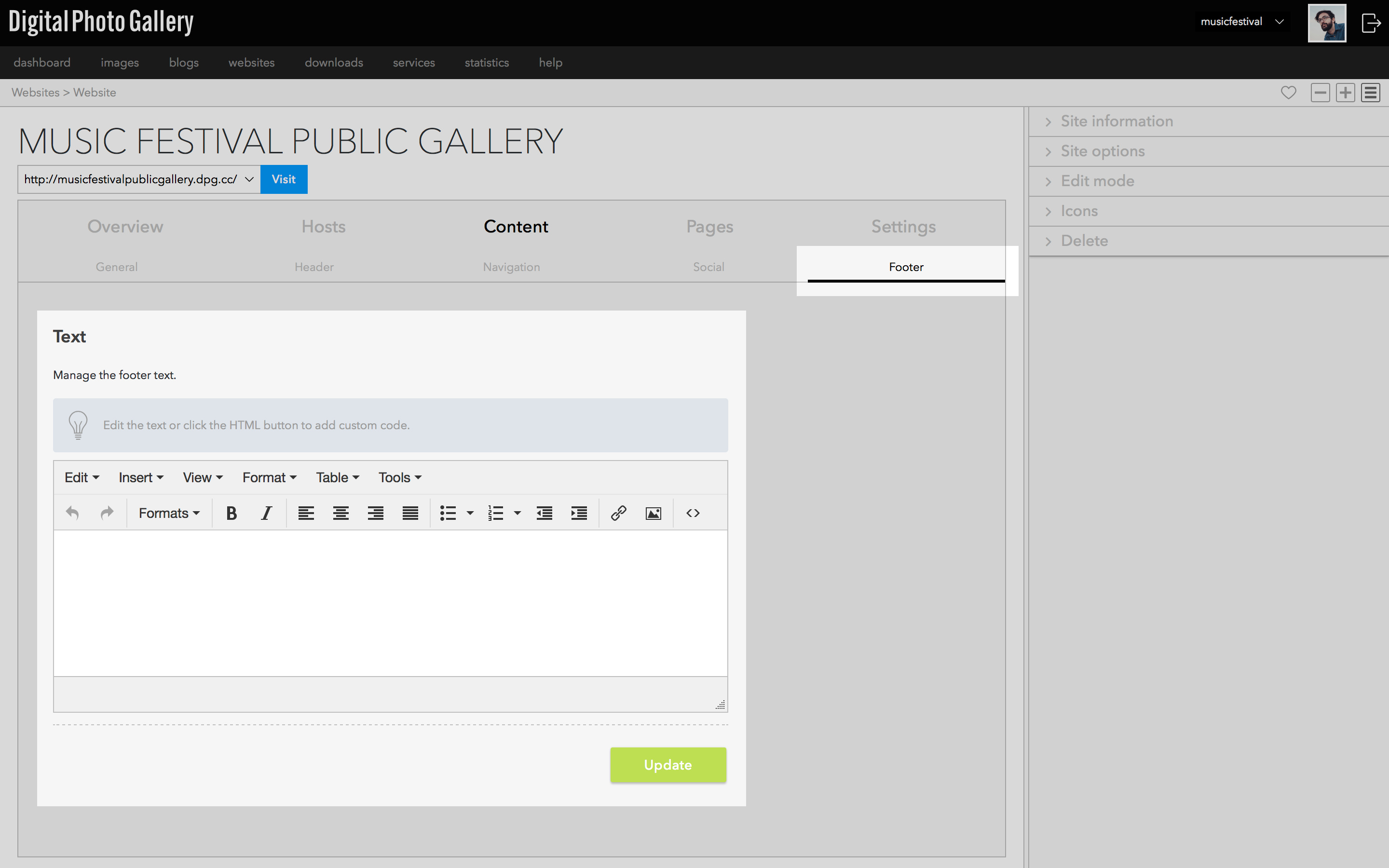Public Site - Setting up a Public Gallery
In this guide we'll go through the steps to create and configure a new gallery for an event such as a music festival.
Unlike the press site, this gallery is meant to be accessed by the public and includes sharing options to social media.
You can customise the design as much or as little as you like, from adding a simple logo to a full HTML skin to match your current web presence exactly. Like all DPG sites, it can also use your own domain name to seamlessly integrate into your existing website.
Contents:
- Create the site
- Fill in header and page title text
- Add a logo and customise site design
- Add a header image
- Add website icons
- Upload and add test images
- Preview your site on the web
- Add social media icons
- Google Analytics
- Add a public host or use your own domain name
- Next steps
Create the site
Visit the websites screen, click on the New site tab.
Scroll to the Modern Narrative template. Under the configuration options choose Music Festival Public Gallery [Switchable]. Select an initial theme and layout (this can be changed later). Click Create and give your site a name.
If your site is for an annual event you can optionally add a year Page Group, which will make the addition of future pages much easier. Click Advanced Options and in the Page group section enter the current year or season, for example 2017. Click OK.
Wait for the site to be created
Fill in header and page title text
Once the site has been created you can replace the default text with your own information.Add a logo and customise site design
From website overview screen, click Edit Design. Here you can change the base theme and layout, as well as other design elements on the page.
To add a logo, click on Design, select Header and choose a logo file to upload. You can change the size of the logo on the page by using the Scale option.
You can also make any other adjustments to design elements, colours and fonts in the Design section.
Add a header image
Another easy way to personalise the gallery is to add a header image. From the Design tab select Topbar and choose a header image to upload. You can toggle between desktop and mobile view to see how your design will look on different devices.
Add website icons
You can add common website icons in the side panel of the website overview screen.Upload and add test images
Making your site creates corresponding sets in the image admin. Add some content to the Gallery set to see how it looks on the site using the image management tools.If you don't have any images in your account yet, go to the upload screen to add some.
Preview your site on the web
Click the Visit button to see your site live on the testing host address. The test images you added to the Gallery set should now appear here.
Add social media icons
Go to Content and Social to add your social media links to the footer.
Google Analytics
DPG collects a number of statistics and analytics automatically, but you can also add Google Analytics to your site.
Add a public host or use your own domain name
Before you launch your site you should always add a public host. Public hosts are indexed by search engines and content served from a public host loads faster in browsers. A public host could be your own domain name or one of our free dpg.gallery or festival.gallery addresses.
Next steps
- Adding new sections - add, edit or replace the keyword pages
- Preparing for a live event - DPG preparation
- Preparing for a live event - Team preparation